The bathroom, often considered a private sanctuary, has witnessed a remarkable transformation in its design and functionality over the years. Uniting aesthetics and practicality, bathroom design points to a careful balance between a personal statement of style and the common notions of comfort. This discourse aims to educate about the essentials, ranging from the fundamentals of bathroom design, sustainable approaches that take into account our environmental responsibilities, and the thrilling innovative trends that are redefining the way we view this intimate space. Additionally, a key aspect of bathroom design, the guideline for budgeting and planning, will be provided to ensure a well-executed and cost-effective bathroom redesign.
Fundamentals of Bathroom Design
Understanding Bathroom Design Basics
Bathroom design is more than simply organizing the necessities. It is also about creating a comforting and visually appealing space that improves your daily routine. The essence of excellent bathroom design is ensuring functionality and simplicity while incorporating personal style and aesthetics, making it a personal retreat within the home.
Common Styles and Layouts
Bathrooms come in various styles, each offering a different aesthetic and feel. A traditional bathroom style incorporates classic designs and fixtures, usually using neutral colors and materials like wood and porcelain. Contemporary bathroom design prefers clean, straight lines and often features bold contrasting colors and innovative fixtures and technology. On the other hand, a minimalist bathroom design emphasizes functionality, keeping the decor to a bare minimum, prioritizing space, and using basic shapes and structures.
The layout of a bathroom
largely depends on the space available. Single fixture bathrooms contain only one plumbing fixture such as a sink or a toilet, making them ideal for smaller homes or apartments. Full bathrooms include four core elements: a sink, shower, bathtub, and a toilet. An en-suite bathroom is attached directly to a bedroom, while a wet bathroom waterproofs the entire space, negating the need for a separate shower area.
Functionality and Simplicity
The key to an effective bathroom design is the blend of functionality and simplicity. The layout and fixtures should cater to the needs of those using the space. For instance, a family bathroom may prioritize double sinks and plenty of storage. Seniors might prefer a bathroom that includes accessibility features such as handles and non-slip flooring. Understanding the users’ needs drives the design process towards a blend of practicality and simplicity.
Importance of Color Schemes
Color schemes play a significant role in determining the mood and energy of a bathroom. Neutral colors such as whites, beiges, and grays are often used to create a clean and relaxing atmosphere. Warmer shades like yellow or coral can instill a sense of coziness while vivid colors like turquoise or lime green give off a quirky, modern vibe.
Selecting Bathroom Flooring
Good bathroom flooring melds style with durability. Tiles, particularly porcelain, are a popular choice due to their water resistance and range of design options. Vinyl and laminate flooring are affordable options known for their water resistance, while high-end natural stones like marble provide an opulent look.
Lighting and Fixtures
Good lighting impacts the look and functionality of a bathroom. Sconces or overhead fixtures provide overall light while task lighting, like a vanity light, is important for daily routines. Ambient lighting, such as candles or LED strips, can add drama and set a relaxing mood. It’s also important to use fixtures that complement overall design schemes. Pedestal sinks, for example, work well in smaller or vintage-style bathrooms, whereas modern bathrooms might feature a vessel sink or wall-mounted vanity.
Understanding Bathroom Design
Bathroom design should artfully blend functionality with personal style. The best designs maximize utility while maintaining aesthetic appeal through the clever arrangement of fixtures and intentional use of space. Converting this essential area of the house into a space that aligns with your daily routine and style preferences is the ultimate goal of a well-executed bathroom design.
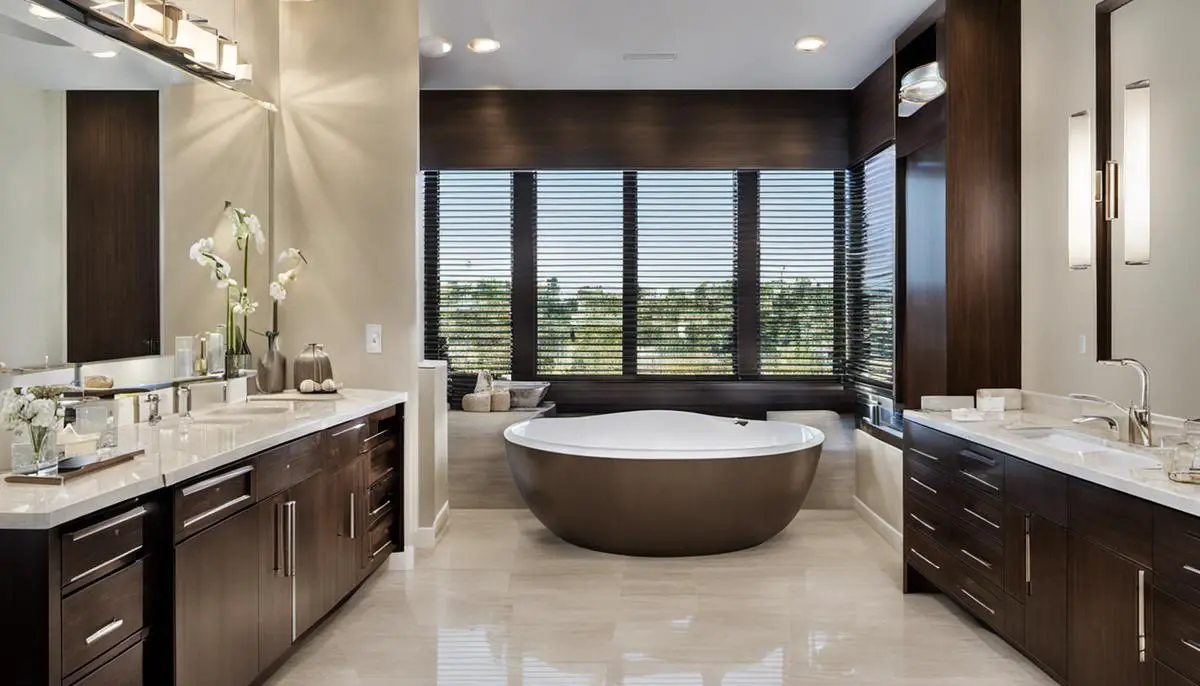
Sustainable and Eco-friendly Design
Approaching Sustainable Bathroom Design
Currently, sustainability is a growing trend in bathroom design. Eco-friendly materials like recycled tiles, made from repurposed lamp glasses and car windshields, are popular choices. You can also consider recycled steel for fixtures. The characteristic resilience and accelerated growth rate of bamboo render it a worthwhile option for cabinets and countertops given its natural resistance to water and humidity.
Another alternative includes porcelain-fixtures for sinks, bathtubs, and toilets. As a naturally derived clay material, porcelain is recyclable, hence a solid eco-friendly pick. Additionally, sinks made of recycled glass can provide a boost in aesthetics and sustainability. Consider terrazzo, a material composed of recycled glass, porcelain, pre-consumer porcelain, and quartz, for sturdy and eco-friendly countertops.
Water-Conserving Features in Sustainable Bathrooms
A key principle of sustainable bathroom design involves efficient water usage. Water-saving features in a bathroom can dramatically reduce your water bills and conserve precious water resources. Low-flow faucets and showerheads are designed to perform with less water compared to conventional fixtures. Incorporating dual-flush toilets, which offer a low flush option, can significantly minimize water use. By installing a graywater system, you can reuse the water from sinks and showers for toilet flushing, thereby saving fresh water.
Energy-Efficient Bathroom Lighting and Ventilation
The use of energy-saving fixtures is another critical aspect of sustainable bathroom design. LED lights, although more expensive initially, use less energy and last longer, adding to the sustainability factor. Overhead and vanity lights should ideally be Energy Star rated. Occupancy sensors in bathrooms ensure lights are used only when required, conserving energy.
Natural ventilation is an energy-efficient way to deal with humidity in bathrooms, also ensuring indoor air quality. Using windows and skylights for daylight can minimize the need for artificial lighting during the day. Solar tubes, an increasingly popular choice, can bring natural light into bathrooms without windows.
Sustainability Certifications for Bathrooms
Look out for relevant certifications to ensure bathroom fixtures and materials are indeed eco-friendly. WaterSense certification by the Environmental Protection Agency (EPA) indicates that a fixture is 20% more water-efficient than conventional models. The Forest Stewardship Council (FSC) certifies products made from responsibly harvested and verified sources, useful when choosing wooden parts of your bathroom.
Unlocking Long-Term Prosperity with Sustainable Bathroom Design
Committing to sustainable bathroom design is not only a step towards environmental responsibility but also a key to enhancing your property value. As the awareness for eco-friendliness continues to grow among prospective homebuyers, houses incorporated with green elements such as recycled tiles or energy-efficient fixtures are in higher demand. These sustainable elements are not just environmentally appealing, they are also built to last with lesser maintenance required over time. As a result, investing in a sustainable bathroom design emerges as a judicious choice that combines financial wisdom with social conscientiousness.
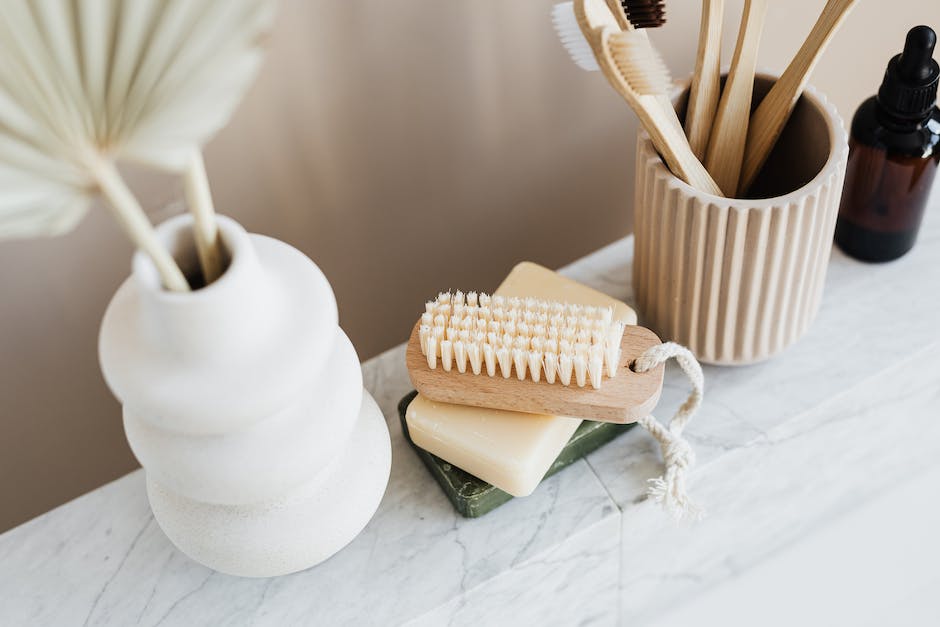
Innovations in Bathroom Design
Modernizing Bathroom Experience with Smart Mirrors
Bringing a wave of innovation in bathroom design is the inclusion of smart mirrors. Transforming the basic functionality of conventional mirrors, these technologically-advanced devices offer a range of appealing features. From LED lighting and touch screen panels to demisting capabilities, they offer not only convenience but also a sense of elegance. Higher-end models can even surprise you with Bluetooth connectivity for music or phone calls, making your mirror more than just a reflective surface. Plus, the convenience of seeing date, time, and weather forecast while freshening up implies you can stay organized and informed without stepping out of your bathroom. Thus, smart mirrors are an admirable contribution to modern bathroom design, offering delightful experiences to users.
Heated Floors for Comfortable Bathrooms
Heated floors are another increasingly popular trend in bathroom design. This technology uses radiant heat, which includes installing heat conductive materials underneath the flooring to ensure the floor stays warm. This can be especially comfortable during the colder months, providing a cozy ambiance for users. Heated flooring is available for most flooring types, including tile, stone, and laminate, and can be easily controlled with a thermostat for temperature adjustments.
Walk-In Showers Enhancing User Experience
Walk-in showers are a trend that has stayed consistently popular in the world of bathroom design. They are particularly favored for their easy accessibility and sleek appearance. Walk-in showers are often installed flush with the floor for an open, seamless feel, which makes them a great option for people with mobility issues. Furthermore, with advancements in technology, these showers can feature digital interfaces to control water temperature, pressure and multi-jet functionality. Walk-in showers bring both style and convenience, making them a worthy addition to any modern bathroom.
Technology in Bathroom Design
The integration of technology into bathroom designs also extends to other appliances and fixtures. Touchless faucets and toilets, for instance, are becoming increasingly common. These fixtures are not only hygienic but also help save water, contributing to sustainability. Digital shower systems that allow users to customize and save their preferred settings, from temperature to pressure, are also on the rise. Technology is also being used to improve lighting systems. LED lights, for instance, offer a wide variety of color options, are energy efficient, and have longer lifespans than traditional bulbs.
Striking a Balance Between Aesthetically Pleasing and Functionally Efficient Bathroom Designs
Designing a bathroom in the present era is as much about incorporating cutting-edge technology as it is about creating an aesthetic and convenient space. Importance needs to be given to various elements such as tiles, color schemes, and fixtures as they define the overall appeal of a bathroom. A well-designed bathroom seamlessly marries style and functionality. For instance, ceramic and porcelain tiles add to the decor, offer functional advantages for damp atmospheres, and are available in a multitude of styles and hues. Likewise, fixtures like faucets and showerheads need to be chosen with care, ensuring their usefulness and also enhancing the overall aestheticism of the bathroom.
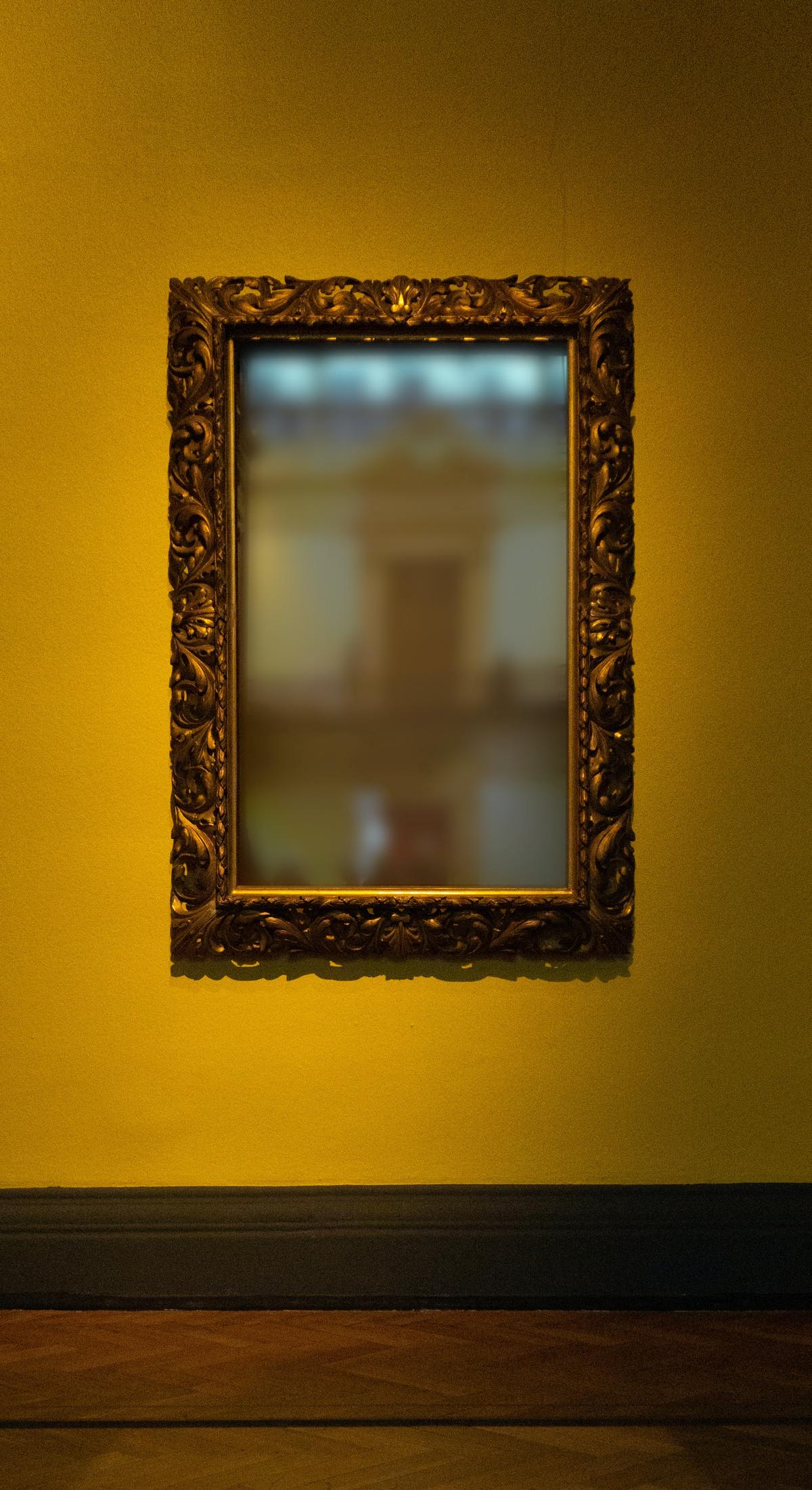
Photo by villxsmil on Unsplash
Top Tips for Budgeting and planning a Bathroom Redesign
Planning Your Financials for a Bathroom Remodel
Financial planning is one of the cornerstones of any renovation project, particularly when revitalizing a bathroom. Costs of materials and labor coupled with unexpected expenses can swiftly escalate. It’s essential to develop a realistic financial plan by taking into consideration all foreseeable costs. Start by enlisting the desired elements for your bathroom like tiles, fixtures, fittings, countertops, and so forth. Investigate their prices and append another 10 to 20 percent as a contingency plan for unexpected expenditures, such as unexpected plumbing or construction hurdles encountered during the remodeling process.
The Benefits of Hiring a Professional Designer
While it may feel tempting to opt for a DIY remodel, there are significant benefits to hiring a professional bathroom designer. They bring expertise in space planning, knowledge of current trends, and practical insights into material selection, lighting and plumbing. Professionals can recognize potential issues before they become significant problems, saving you time and money in the long run. They also have connections with suppliers and contractors, which can help streamline your redesign process and potentially even snag discounts.
Going DIY & Potential Pitfalls
If budget constraints don’t allow for professional help, then doing it yourself could be an option. DIYing can potentially save cost, and there is a certain satisfaction in creating your own space. However, it’s essential to be aware of potential pitfalls. Unforeseen problems like rot, code violations, and faulty plumbing are common issues that could dig into your budget beyond your estimation. Plus, tasks like tiling, installing fixtures, and plumbing often require a certain level of skill, and attempting to do it without the necessary expertise could lead to mistakes and needless expense.
Getting the Best Value for Your Money
Regardless of whether you’re hiring a professional or going DIY, getting the best value for your money should be the goal. This involves making smart choices about where to spend and where to save. High-traffic items like faucets and toilets need to be durable and high quality, while items that can be easily replaced, like towel racks or mirrors, are places where you can potentially save. Also, never compromise on the quality of work, whether it’s plumbing or electrical wiring. It’s better to delay a project than deal with faulty installations.
Finally, plan for the future. Consider water and energy-efficient appliances that can save on utility bills or features like no-threshold showers or grab bars that can make your bathroom more accessible as you age. This is known as ‘aging in place’ design and can significantly boost your bathroom’s long-term value.
Understanding Costs and Setting Realistic Expectives
Last but not least, to avoid overshooting your budget, it’s critical to understand the typical costs associated with a bathroom redesign. Plumbing fixtures, tiles, lighting, cabinetry, and labor are some of the significant expenses. Research and compare prices, ask for quotes from professionals, and set realistic expectations about your final design based on your budget. Remember, the idea is not to replicate a high-end hotel bathroom unless you have the finances. It’s about creating a functional, comfortable, and personal space that fulfills your needs.
Avoiding Common Mistakes in Bathroom Design
Common mistakes in bathroom design to avoid include rushing the process, inadequate lighting, ignoring ventilation, inadequate storage, and choosing style over function. Good bathrooms are a blend of design and functionality, so it’s crucial to balance aesthetics with practical considerations. Being aware of these common pitfalls can help enhance the success of your remodel.
In conclusion, a bathroom redesign can significantly enhance your home’s comfort and value. However, it requires careful planning, budgeting, and consideration of various factors. Whether you’re a DIY enthusiast or prefer the expertise of professionals, following the guide above can help you navigate the process more effectively.
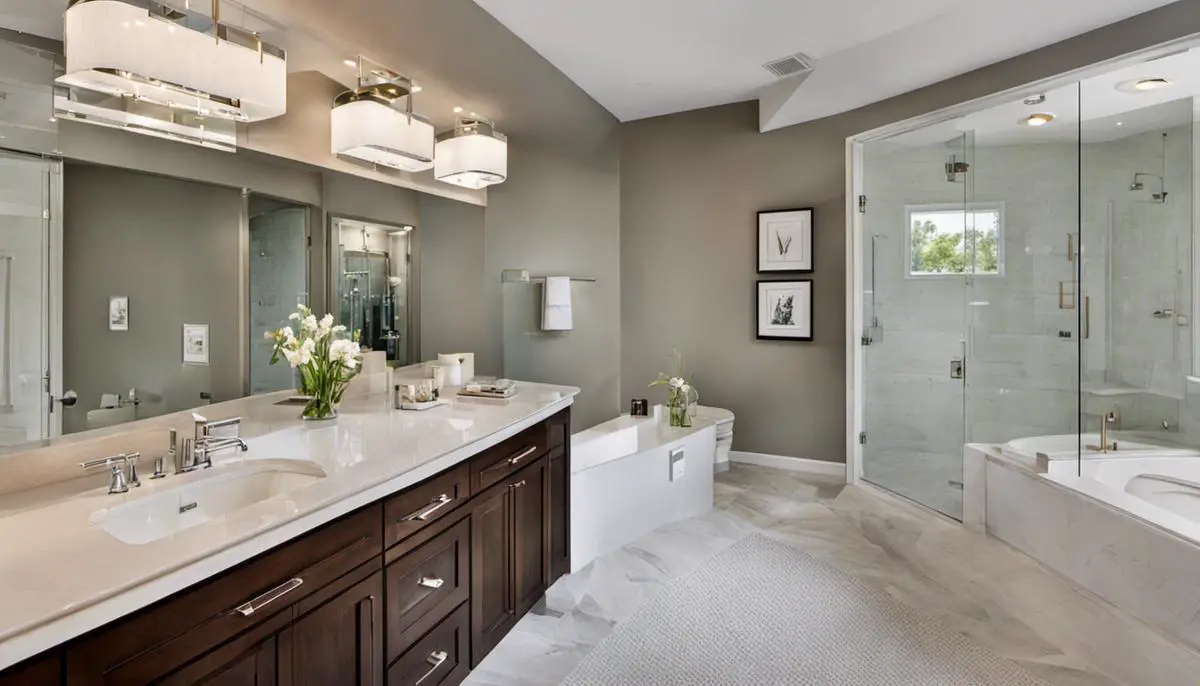
While the fundamentals establish a firm base, sustainable and eco-friendly design accentuates the responsibility we hold toward our planet, and innovations keep pushing the boundaries of what is possible in bathroom design. Furthermore, efficient budgeting and planning enable a smooth transition from idea to reality, making the process a rewarding journey rather than a burden. As you navigate your way through a bathroom redesign, may this discourse serve as a valuable guide to inspire, enlighten, and ultimately, help create a space that is both comforting and invigorating.

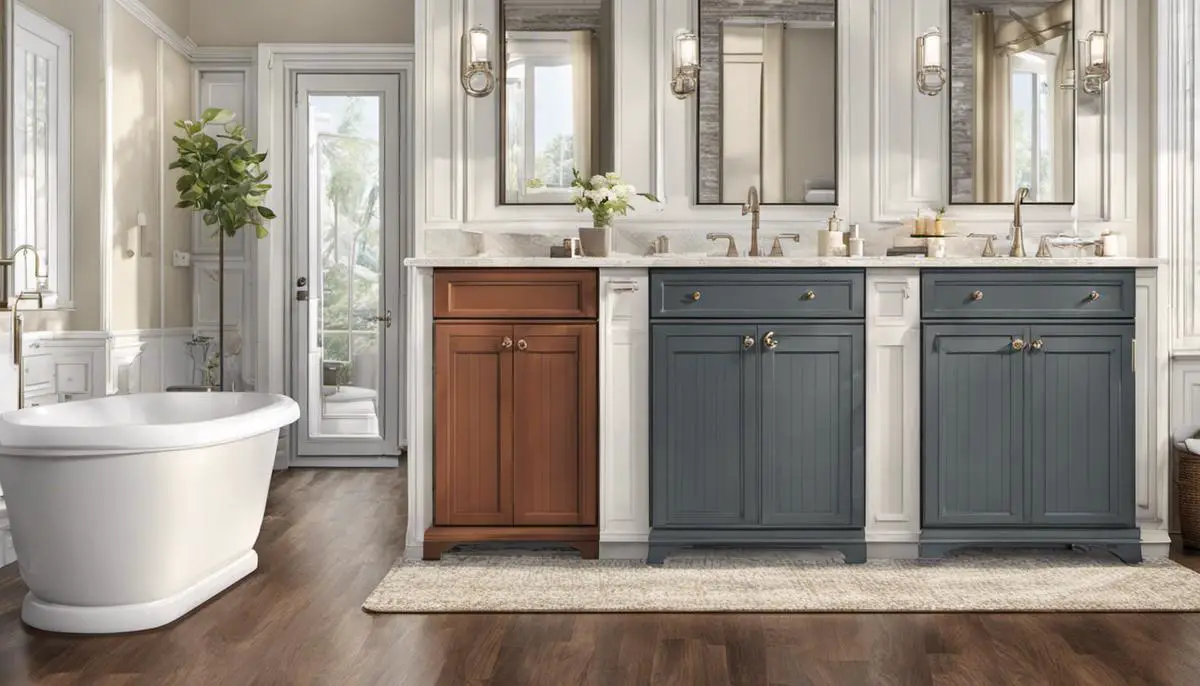
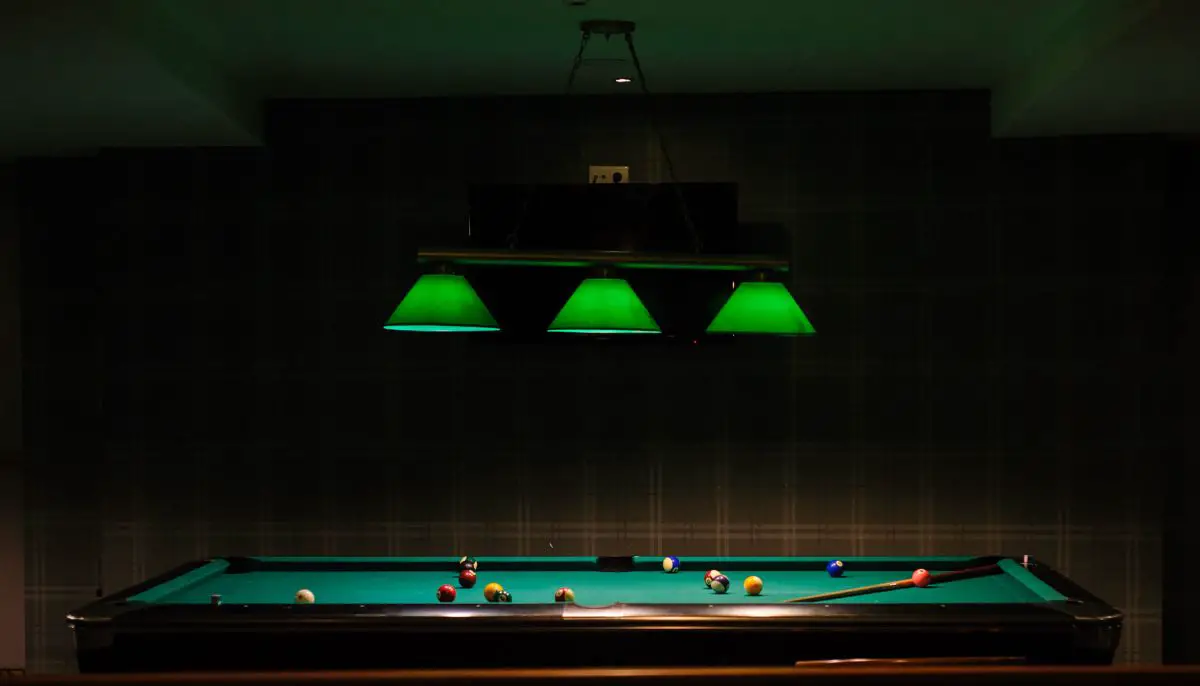
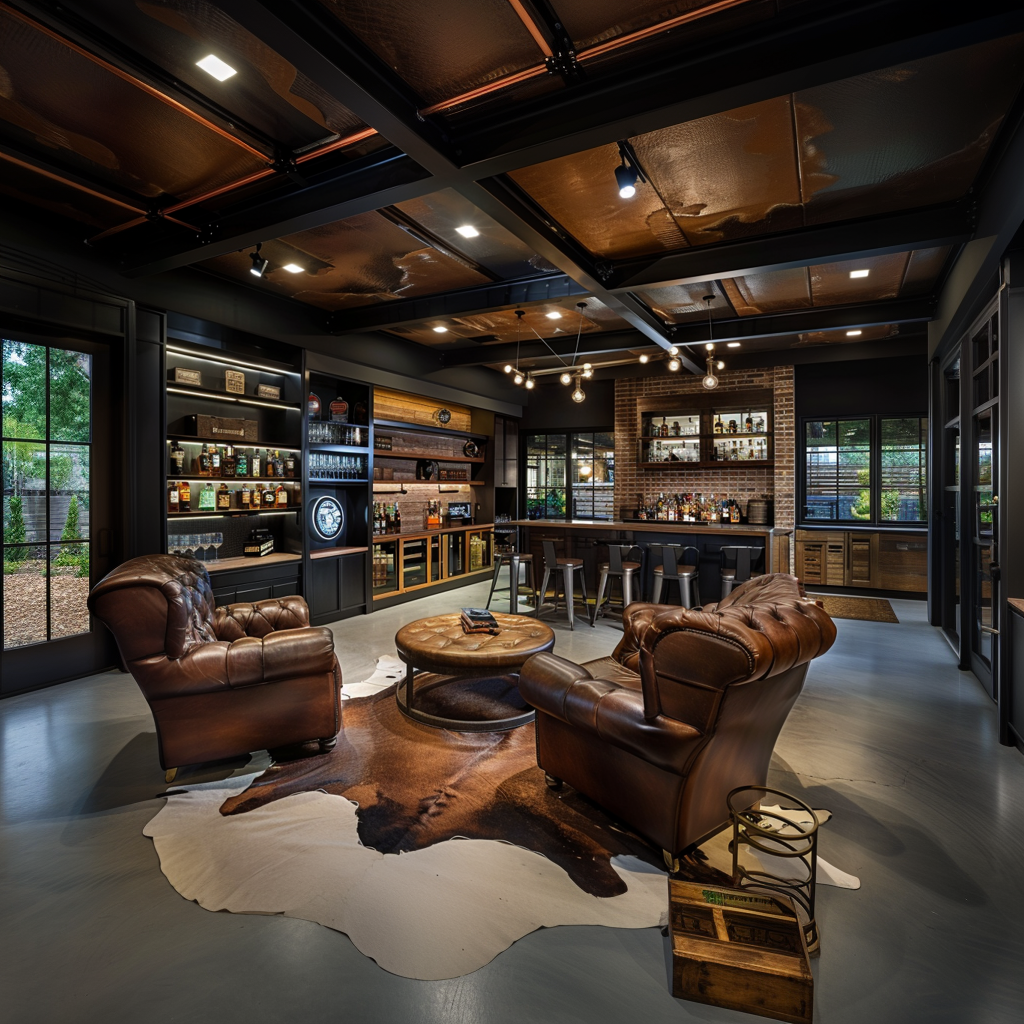
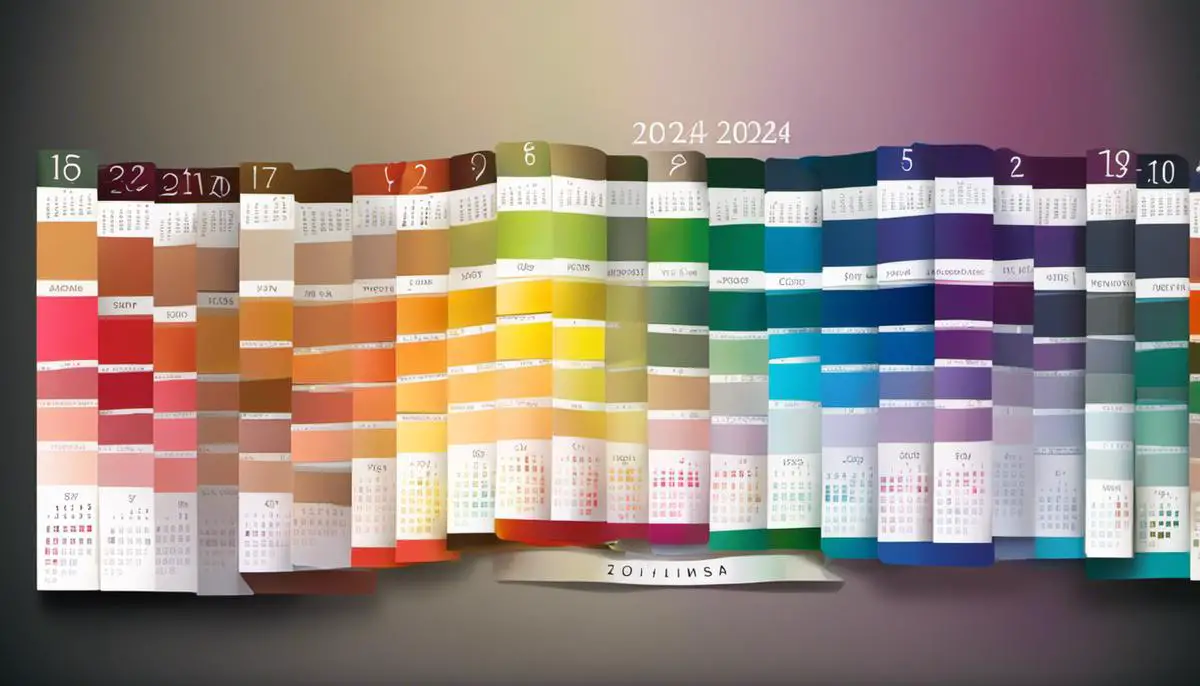
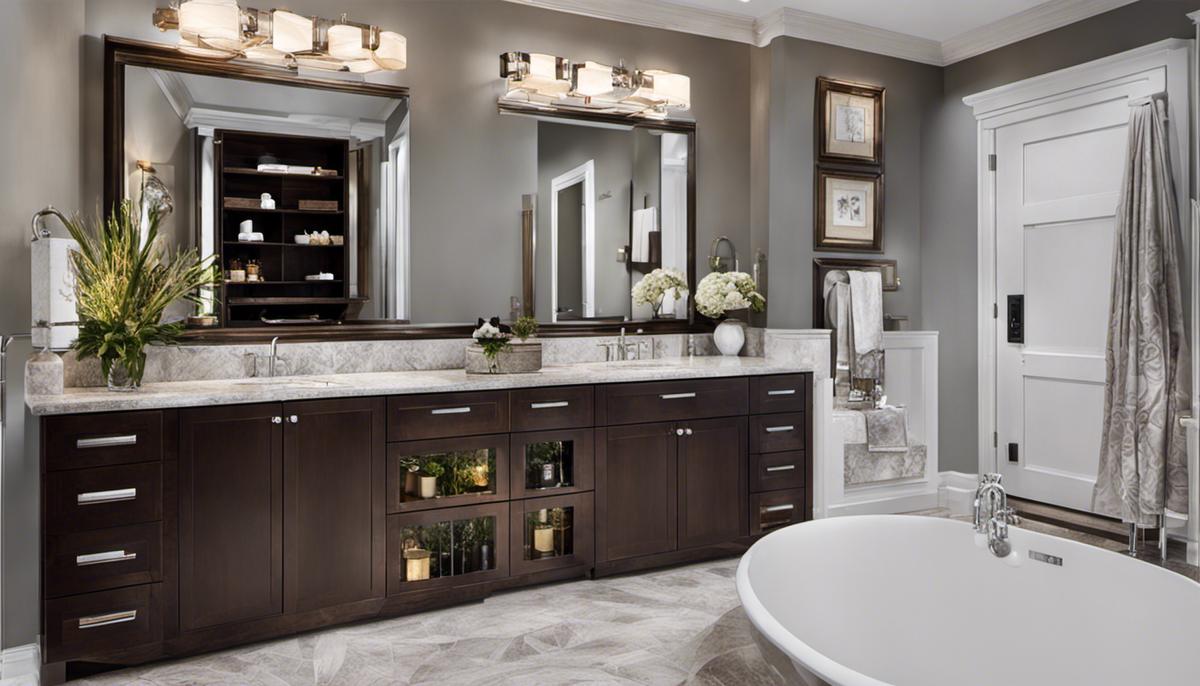
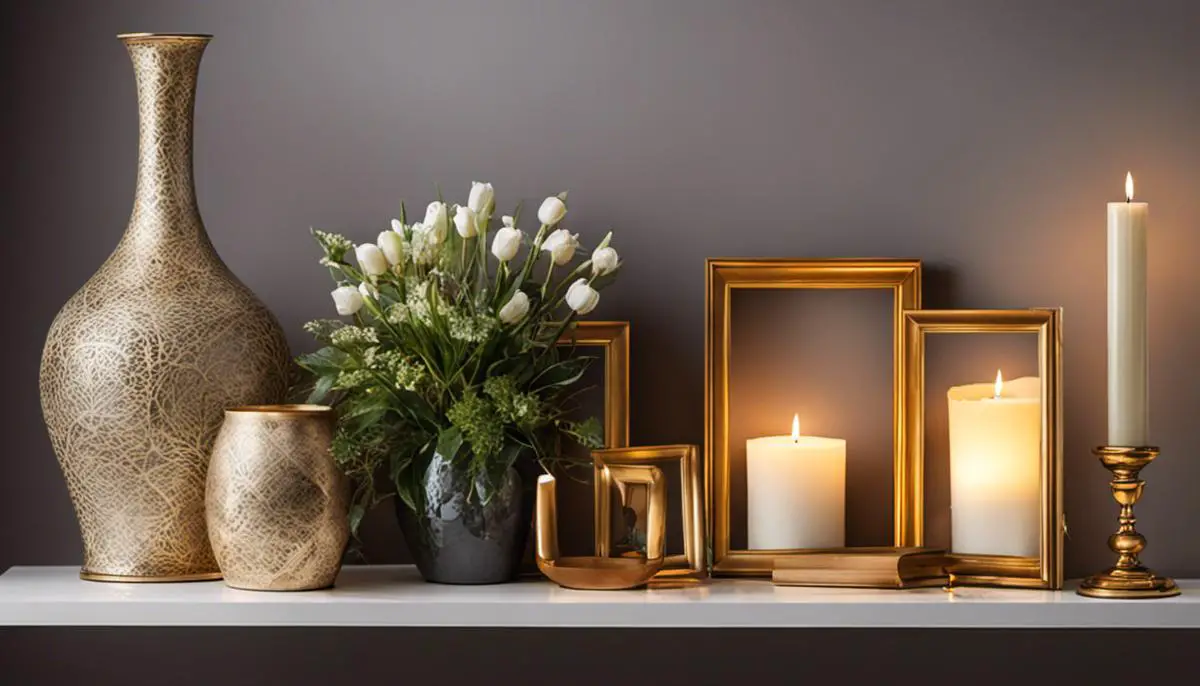
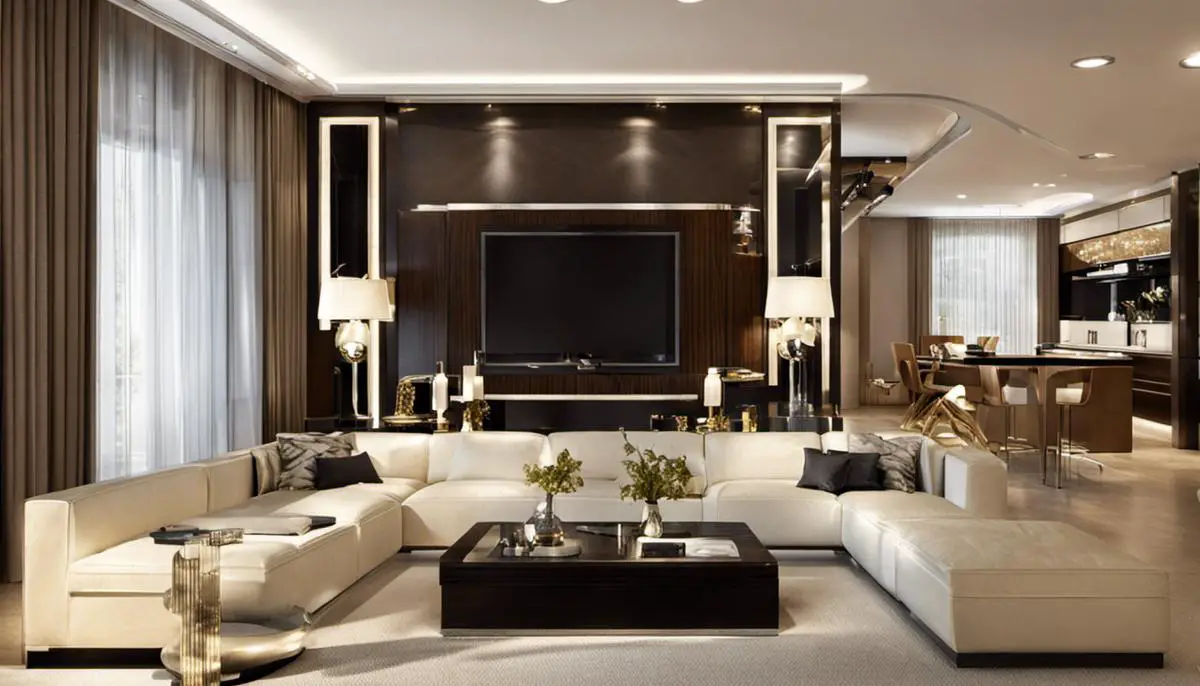

Leave a Reply